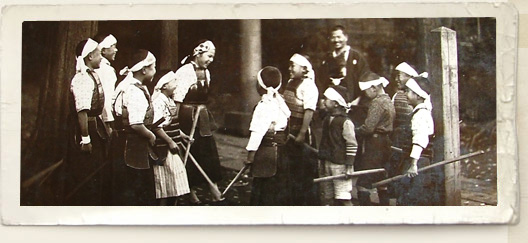
Etiquette
We follow the traditional Japanese etiquette in the dojo. The dojo isn't just a training place, but a shrine, a sanctuary to cultivate the physical and spiritual knowledge of the ancients, where we can achieve new experiences by following the instructions of the master. When entering the dojo, you always must follow these rules:
- Respect the spirit of the place, you should bow every time you enter or leave.
- In the beginning, and in the end of the training, make sure to set your clothing right.
- Never leave your sword (bokuto, shinai, katana) on the ground, and never step over it.
- Always do as your master says. Work with full devotion.
- If you don't understand something, ask. Don't develop bad habits by doing something wrong.
- If you suffer or cause injury, call your master immediately.
- Show respect for your master, and for your fellow trainees.
- Strive to break your limits.
- Respect your ancestors, don't distort their message.
In the beginning of the trainings, we sit in seiza, and say the Dojo Kun (motto) together:
„KEN WA SURUDOKU, KI WA MARUKU”
(剣は鋭く, 気は円く)
in English:
"Be your sword sharp and fast as lightning,
but keep your soul in calmness!"
The etiquette of the katana
- One sword can be owned only by one man.
- Respect your sword, and keep it clean.
- You should hold your sword only by touching the tsuka.
- When sitting in seiza before practise, put the sword by yourself with the edge facing outside.
- At the end of the practise, when sitting in seiza, put the sword before you, the edge facing towards you.
- Wear your sword on your left, in your belt, obi.
- If you hold the sword in your right hand, you show you don't want to fight.
- The tsuka of the sword placed on the shomen (the sanctuary of the dojo) should always point to the right.
- When listening to your master, hold the katana in the saya in your left hand, the tsuka pointong backwards.
